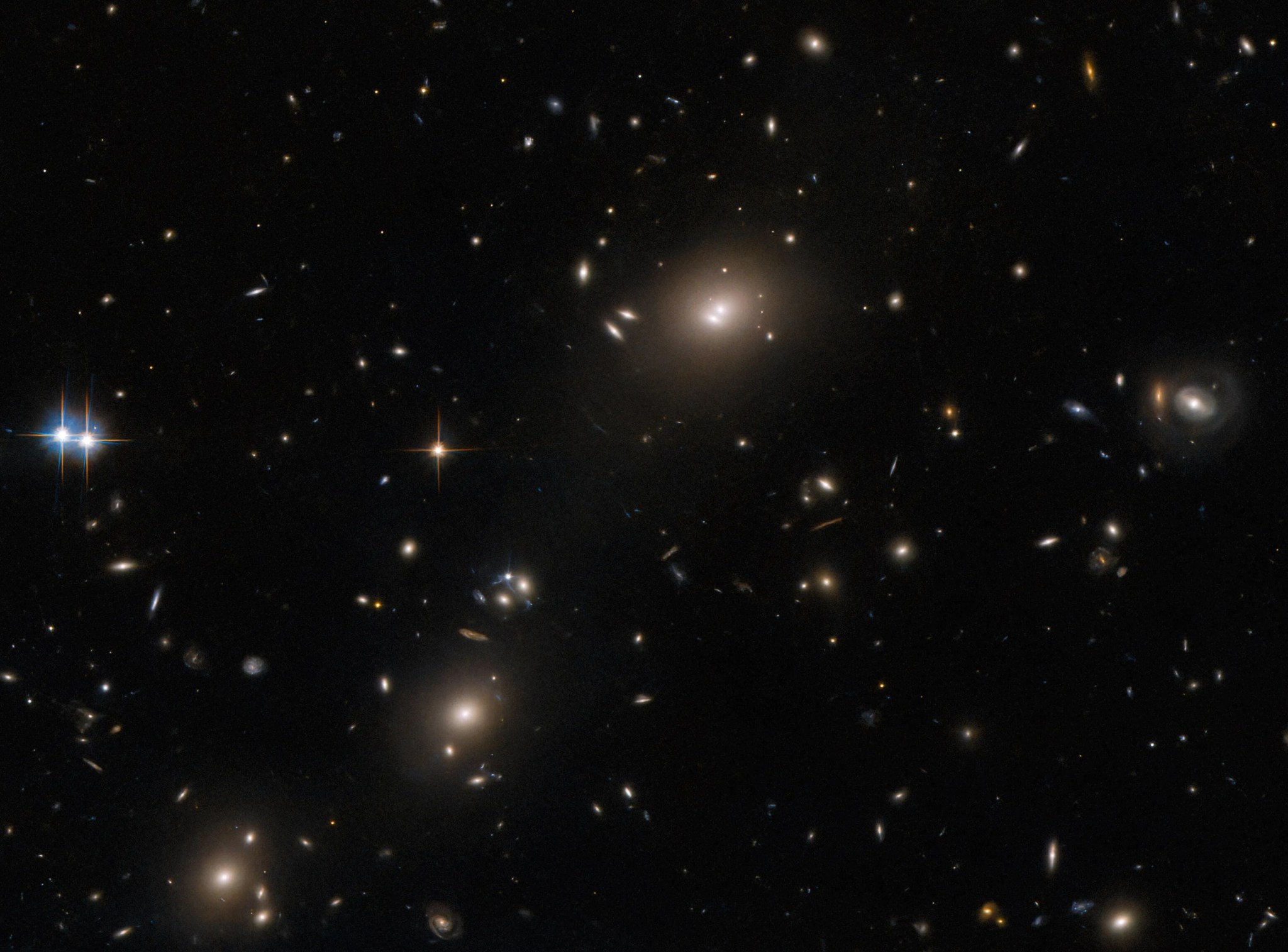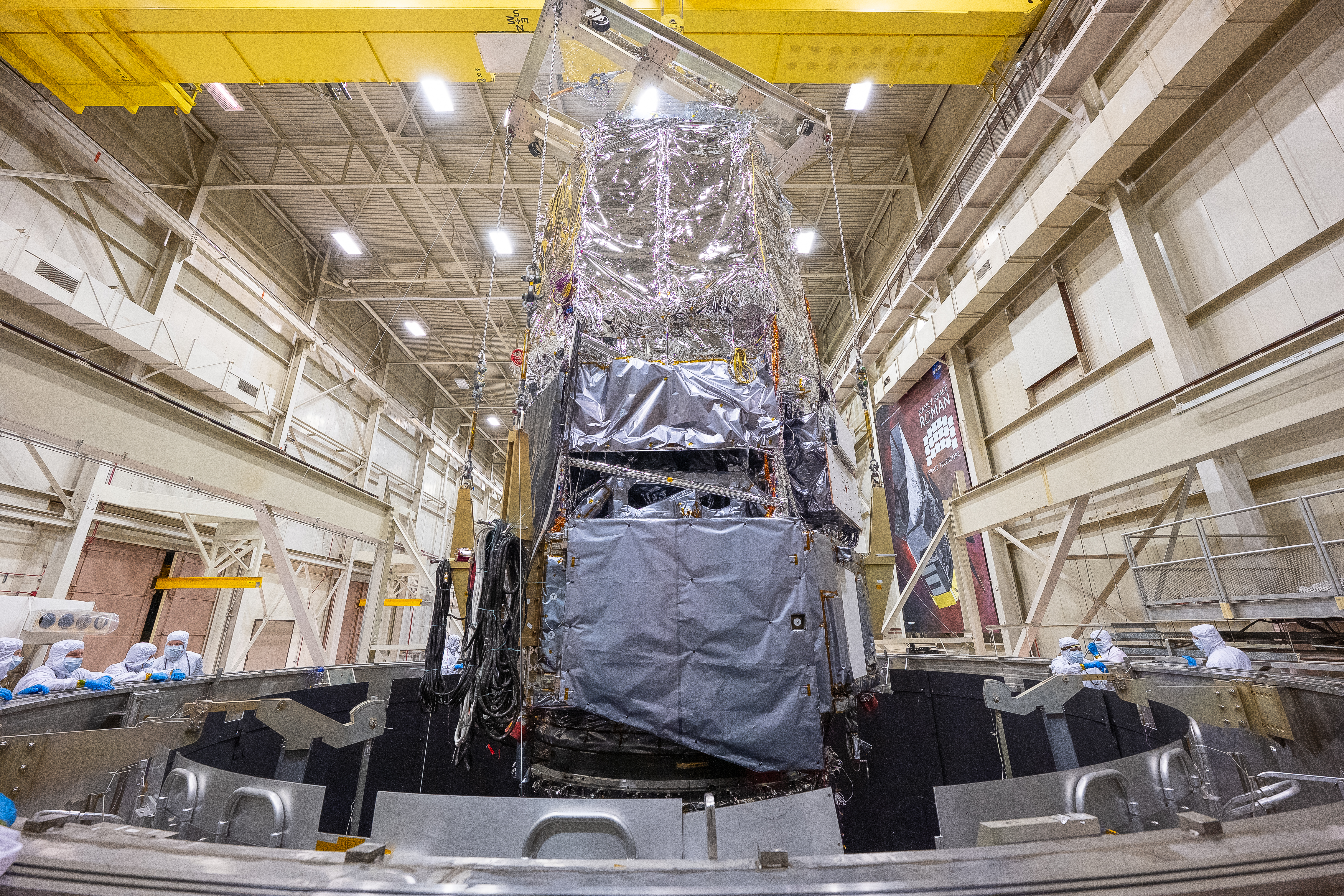A menagerie of interesting astronomical finds are visible in this image from the NASA/ESA Hubble Space Telescope. In addition to several large elliptical galaxies, a ring-shaped galaxy is lurking on the right of the image. A pair of bright stars are also visible at the left of the image, notable for their colorful crisscrossing diffraction spikes. This collection of astronomical curiosities is the galaxy cluster ACO S520, located in the constellation Pictor and captured by Hubble’s Advanced Camera for Surveys.
ACO S520 represents one of a series of Hubble observations searching for massive, luminous galaxy clusters that had not been captured by earlier surveys. Astronomers took advantage of occasional gaps in Hubble's busy schedule to capture images of these barely explored galaxy clusters, revealing a wealth of interesting targets for further study with Hubble and the NASA/ESA/CSA James Webb Space Telescope.
Galaxy clusters are among the largest known objects in the universe. Studying these objects can provide insights into the distribution of dark matter, the mysterious substance that makes up most of the mass of a galaxy cluster.
Text credit: European Space Agency (ESA)
Media Contact:
Claire Andreoli
NASA's Goddard Space Flight Center, Greenbelt, MD
301-286-1940



































